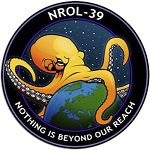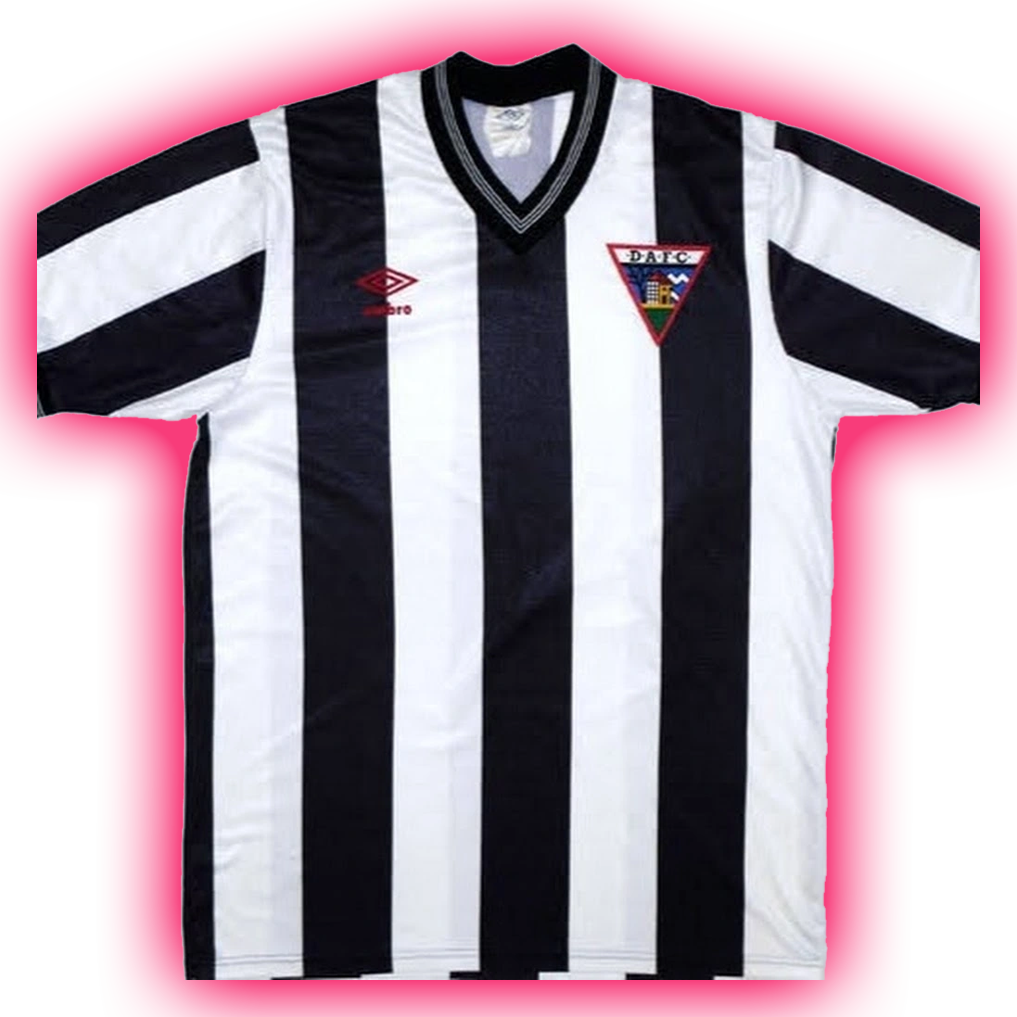Not sure why NA is being singled out here. Bottles are largely the same shape (with a few functional differences, see below) no matter where they come from.
The round shape is mostly a historical artifact from early designs that were hand-blown. A hexagonal (bestagons!) shape would pack better in an infinitely large container, but since most shipping crates are rectangular, there will be wasted space either way, and round is far easier and cheaper to mass-produce. Also, as a carbonated beverage, sharper corners could create stress points and exploding bottles.
Toppling over could potentially be reduced with a wider base, but fitting in the hand is a hugely important factor for any drinking container. There are larger-based bottles, but they also need more specialized packaging and storage space. By using bottles that are similar size to aluminum cans, lots of infrastructure can be dual-purpose (I’m thinking of things like can/bottle storage in your refrigerator, for example).
Double the volume of what? Glass bottles have to be thicker than other materials, so to get the same volume as a can with the same size base, it has to be taller.
If you want to do a lot more reading, here’s a few sources I borrowed from:
https://sha.org/bottle/beer.htm
Regarding the functional design features referenced above:
https://www.hillebrandgori.com/media/publication/beer-bottle-sizes-and-their-surprising-history
Those ‘shoulders’ we keep mentioning remain in modern beer bottle design mainly for aesthetic reasons. Their original function was to provide a handy place for the yeast residue and dregs to collect, so that these didn’t pour out into the glass with the beer. Nowadays, most beer is filtered, so this design feature is no longer needed. Unless you’re bottling a yeast beer like a Belgian beer, of course.
Not the deep dive I expected to go on today. Thank you, bottle scientist.
By using bottles that are similar size to aluminum cans, lots of infrastructure can be dual-purpose (I’m thinking of things like can/bottle storage in your refrigerator, for example).
A great benefit of both containers being designed to fit in a hand!
Sounds like it’s time for a stubby.

You forgot coors golden banquet
Not sexy enough.
Ahh, the old brown tit/nipple. Miss drinking from these bottles
NA = North American or non-alcoholic?
North America wasn’t even on my radar! I suspect anyone who’s worked in the industry thought non-alcoholic by default.
I haven’t tried a NA beer in some time, but when I did years ago it was in the same tall bottle that every other commercial beer uses. I honestly thought you meant north America and that other countries have differently shaped bottles (like how Sessions uses small 12oz bottles).
OP DID mean North America. I’m just a passerby that associated NA with Non Alcoholic. I also associate NR as meaning glass bottles, but I don’t know if that’s industry wide, or a local abbreviation.
Non alcoholic beers use the same bottles as regular (for the most part, there may be exceptions).
Have they? Can you give an example? Any NA beer I’ve bought (which is quite a bit) has been in standard beer bottles. Assuming you mean non-alcoholic, right?
They’re talking about standard beer bottles
Ok, but then… I’m confused. If the issue is beer bottles generally, why specify NA beers?
They mean the long neck bottles, but maybe they think different bottles are used in the rest of the world.
Probably North America
North America. Still odd to specify that though.
From a European, what does a standard NA beer bottle look like? I thought your bottles were similar to ours, which means bottom heavy and a slim neck.
Removed by mod
deleted by creator
More and more craft breweries are going can-only. It’s better for the beer and the environment.
I was under the impression that the glass was actually better, since the cans require a plastic lining to not ruin the beer and the bottles can either be recycled and reused as-is after a wash or ground up and remelted with little/no loss in quality.
The plastic lining is for soda - beer tends to be less acidic and so doesn’t need it. (at least in general)
Cans must be recyclable as well as they come with a deposit and many people return them to recycling centers.
But they aren’t reusable, which is always the preferable option.
The lining in question is very thin (akin to a layer of paint) and just burns up when the cans are re-melted.
Recycling beer bottles is indeed pretty easy once you get them to the processing center intact, but it’s getting there that’s the hard part. They’re fragile, pretty heavy and don’t stack well unless you put them in some form of packaging.
Once they’re broken, they’re basically useless; glass isn’t recycled much except as grit material for sandpaper; re-melting it is resource-intensive and sensitive to impurities.
There’s no plastic in an aluminum can. Both glass and aluminum are almost totally recycled into their base materials. Aluminum is lighter to transport to and from the recycling facility.
https://en.m.wikipedia.org/wiki/Aluminum_can
The inside of the can is lined by spray coating an epoxy lacquer or polymer to protect the aluminum from being corroded by acidic contents such as carbonated beverages and imparting a metallic taste to the beverage
Guess it depends on your definition of “plastic” and if someone would colloquially refer to an epoxy lining as plastic. Not here to debate word meanings but there is definitely a liner inside aluminum cans.
What I was referring to was the BPA lining traditionally found in cans: https://www.beeradvocate.com/articles/15869/bisphenol-pale-ale-should-you-be-worried-about-the-bpa-in-your-beer-can/
Looking it up now, it looks like there are multiple alternative linings which are being phased in and/or proposed, but every can still has some sort of lining, whether an epoxy or other similar material to protect the contents of the can from the aluminum or vice versa.
EDIT: whether or not this lining outweighs the additional transport and processing costs of glass (remelting/shaping glass is much more energy intensive than aluminum reporcessing as I understand it) was the question I was proposing and one I don’t have an answer for.
What aluminum cans are you getting that don’t have a plastic lining?
No, they absolutely exist, you just seem to be ignorant. https://www.sciencealert.com/viral-video-reveals-the-bizarre-way-you-can-make-a-soda-can-fully-transparent
Glass is almost always the most environmentally friendly packaging for drinks. Aluminium needs a lot of energy to be recycled and can only be used once. I’m not sure how it works in the states but here in Germany we reuse our glass bottles up to 50 times.
Yeah here in the US no containers get reused as is, due to corporate lobbying from pre 1990. Aluminum also is less energy intensive to transport since containers weigh less! Both are infinitely preferable to plastic containers.
Ahhh corporate lobbying is a beautiful thing. Halting progress to make sure the rich get richer! But thanks dor that explanation. Also a good point about Aluminium being lighter.
Aluminum also takes way less energy and is much cheaper to recycle than to produce new! I think roughly around 2/3rds of all aluminum ever produced is still in use because of that. Don’t remember the exact figure, just remember it from my material science electives from college. Aluminum beverage containers usually have BPA liners, which is far from ideal, but as a material in general, it’s pretty nice
yeah, absolutely! I’m not trying to say that aluminium is a bad material. Just that it’s not the right choice as a drink container, at least once you convince the population to return bottles to the store (the deposit system here in germany works pretty well. when people don’t want to return the bottles, they put them next to the closest trash can, so homeless people can collect them and return them to the store for a small reward)
There’s a bottle and can deposit system in some states! You pay an extra 5c per beverage and get 5c back by returning the empty container. Only in like 5 states, but it works well. They don’t get reused, just recycled, but I think that’s pretty much the only way plastic bottles get recycled here, as most recycling is extremely contaminated.
Sorry not disagreeing with you about beverage container material choices! I just like chiming in with more info because I really enjoyed those packaging science classes I took. If I could live my life over again I’d do that instead of software tbh. Glass containers being reused instead of recycled is the dream, imo, but in the current US if you replaced all plastic beverage containers with aluminum ones that would still be a massive win. Transportation energy costs should only improve, so as time goes on that will matter less and less in the equation, but you can also achieve denser packing easier with aluminum packaging than glass. Glass containers don’t take non-cylindrical shapes as easily, or rather, cylindrical containers are far easier, more reliable to produce, and in general a lot more durable. If you swapped from plastic bottles to hexagonal aluminum ones, where you can achieve near perfect packing efficiency, that would be amazing. Far more containers per load, a roughly equivalent weight per container, made from a material that’s ACTUALLY recyclable, and (this I don’t actually know but I believe to be true) more easily automatically sorted out from contaminated recycling, that also has a financial incentive built into it to be recycled? That would be really really really good. Ultimately glass is better, the reusability is REALLY nice and glass also recycles incredibly well, and isn’t harmful as a pollutant, and also doesn’t require a questionably toxic (I believe BPA is an endocrine disruptor, but this isn’t something I know for sure) plastic lining? Oooooo yeah. That’s where it is.
Also just a fun fact, blue glass is like incredibly contaminating color wise, it only takes a tiny bit of blue glass to color a load of clear glass it’s being added to blue! Not a problem with the material, just cool.
Another fun fact, ever wondered why bottles have the bumps running around the edge on the bottom? It’s because the containers warp subtly as they cool, and with a purely circular base, this would give you an ever so slight saddle shape and it wouldn’t sit stably. With the bumps, there’s always at least 3 points of contact, so it’s stable!
Ohh thanks for chiming in! A lot of cool info in your comment, especially that last part about the bumps at the bottom of glass bottles.
I can only agree that aluminum is better than plastic, but I’m not sure about hexagonal cans. The cans we know nowadays are insanely well engineered and only use a minute amount of material, taking advantage of the pressure of carbonized drinks. I don’t think there’s any way to increase packing efficiency of Aluminium cans without increasing material thickness to an unreasonable degree. But regardless, if all drink containers were regulated to be Aluminium (or glass), it would certainly be a big improvement.
Each to their own, but I always prefer the taste of beer from a bottle over beer from a can.
You’re supposed to decant it into a glass for optimal experience, but I hear you. I can drink straight from a bottle in a way I won’t from a can.
I only drink my beer by the growler.
The “stubby” bottles were replaced with tall “classier” bottles in a surge of … fashion-moment, or something.
I remember somebody did a news vid, or documentary on it, & the industry lost usable-storage-effectiveness when they went with the taller bottles, and there’s more glass in them, too…
They said if they’d known what the actual results would be ( it didn’t alter the market to increase the percentage of the population which is always buying beer, for some reason… ), they wouldn’t have done it.
Well, Duh…
“never believe your own hype” IS a rule, because when you’re believing your own marketing-bumf, then you’re not competent at calculating any sort of project balance-sheet, right?









